Introduction
- The CIP theory focuses on mental events related to memory;
- Information acquisition, processing, storage, and retrieval:
- Sensory memory – stimulus, selective attention, familiar patterns;
- STM – chunking, rehearsal;
- LTM – episodic, procedural, and semantic memory.
- Learning new information entails mental associations;
- Information is organized into knowledge;
- Learning entails linking new information to existing knowledge (encoding).
Cognitive information processing (CIP) focuses on the mental learning events underlying the formation of memory, which entail information processing, storage, and retrieval (recall) (Coker and White 78). Learners use sensory memory to organize new information. It is important that a learner is attentive to a stimulus to transfer new information into the short-term memory (STM). One way learners use to process sensory information is selective attention, which entails selecting a stimulus that has interesting qualities. Individuals also attend to a stimulus that has a familiar pattern. Thus, learners learn by relating new content to prior knowledge.
STM is the working memory, which temporarily stores information for regular cognitive learning tasks (Driscoll 386). Learners use a technique called chunking to transfer information from the STM to the long-term memory (LTM). The technique entails the organization of small bits of information into larger ones. Other strategies include encoding (linking new experiences to prior knowledge) and rehearsal (repetition). The LTM consists of the episodic memory (events), procedural memory (systematic tasks), and semantic memory (concepts).
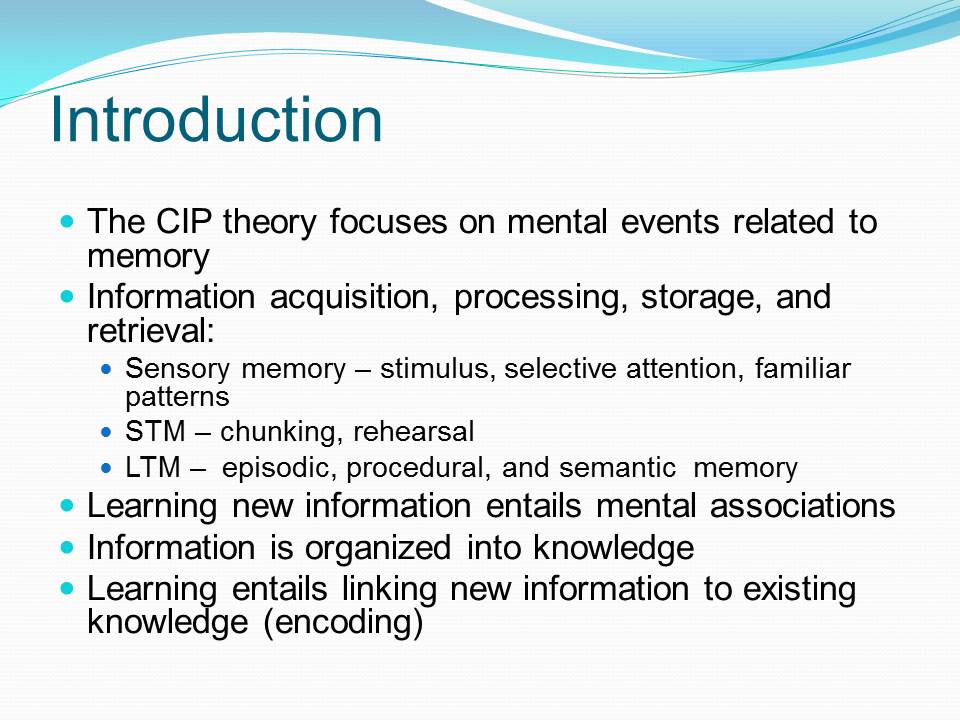
Enhancing Graduate Learning
- Create realistic and rich learning contexts;
- Opportunities for exploring new concepts;
- Collaborations – group assignments/discussions;
- Multiple representations – auditory and visual messages;
- Enhancing self-awareness to build:
- Critical reasoning;
- Goal setting;
- Self-regulation;
- Cognitive flexibility.
The ability of students to learn effectively depends on the nature of the learning environment and instructional methods used. Based on Driscoll’s ideas, effective learning occurs when instruction involves realistic scenarios or contexts. Learning environments should also foster student collaboration, critical thinking, and self-regulation. Through collaborative learning, learners learn to explore problems as a group.
- Nurturing active learning;
- Use of examples or real-world scenarios;
- Use of educational technology to:
- Brainstorm ideas;
- Share ideas and opinions;
- Assess understanding;
- Give feedback.
- Goal-based learning – a learner sets personal goals;
- Problem-based learning.
Active learners have meta-cognitive skills that allow them to control their learning. They are able to relate new information to personal experiences, set goals, and solve problems independently. Educational technology can be applied to promote active learning. Students can use it to share ideas and correspond with the instructor.
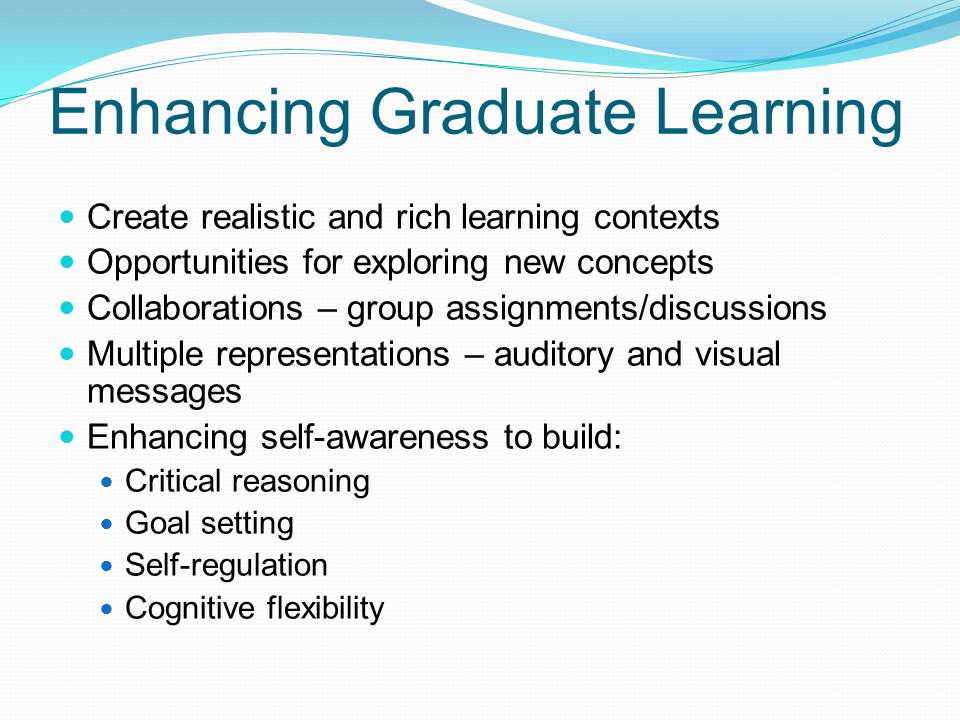
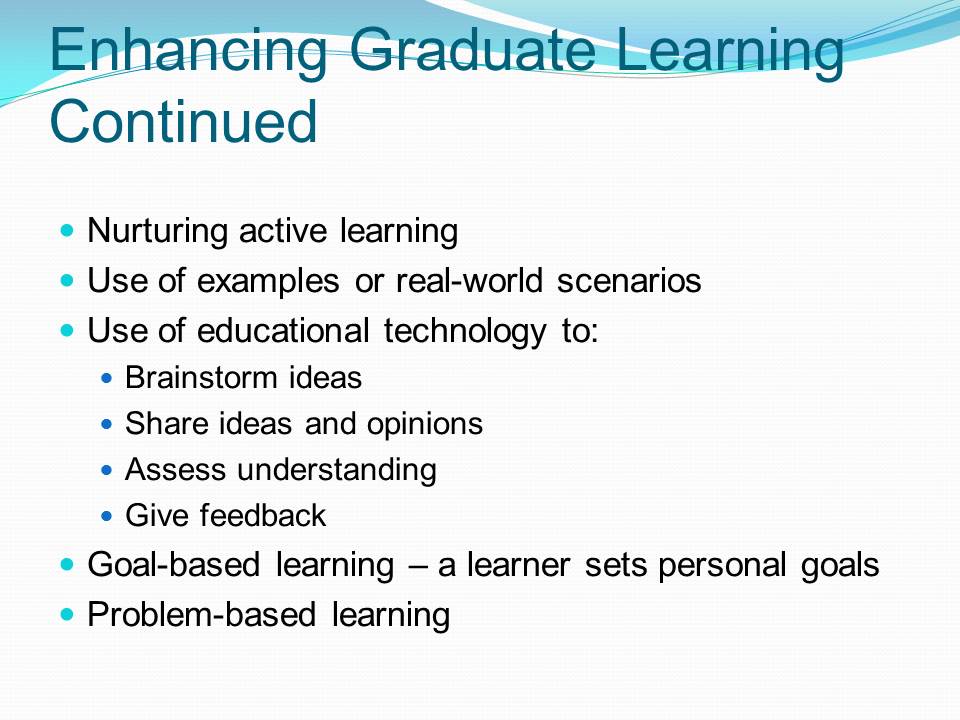
Using ICP in Graduate Learning: Gaining attention
Attention helps learners select key information for cognitive processing. It entails:
- Selective attention;
- Automaticity.
To catch their attention, use cues like:
- Size – Use large objects;
- Intensity – Talk louder, use audiovisuals;
- Novelty – Attractive objects or ornamentals;
- Incongruity – Objects that lack a contextual meaning;
- Emotion – Personal attachment to the subject matter;
- Personal significance – Information of interest.
Attention facilitates the transfer of new information from the sensory memory to the STM. This means that only attended experiences are processed in the STM. Thus, for a graduate learner to learn, he or she must pay attention to the subject taught in class. This facilitates further processing of information in the sensory memory. Selective attention helps learners to process pertinent information and leave out unnecessary details. This means that a student cannot attend to two demanding subjects simultaneously. However, with practice, students can develop automaticity, which allows them to process multiple subjects at the same time.
Using large-sized and attractive objects or illustrations on lecture slides is one way of gaining the attention of learners. Additionally, instructors can gain attention by using intense stimuli, such as bright audio-visual images. Incongruous information is seductive because it is non-contextual. Stimuli that resonate with the learner’s emotions can also attract their attention. Learners also attend to stimuli that are interesting and relevant to their situation.
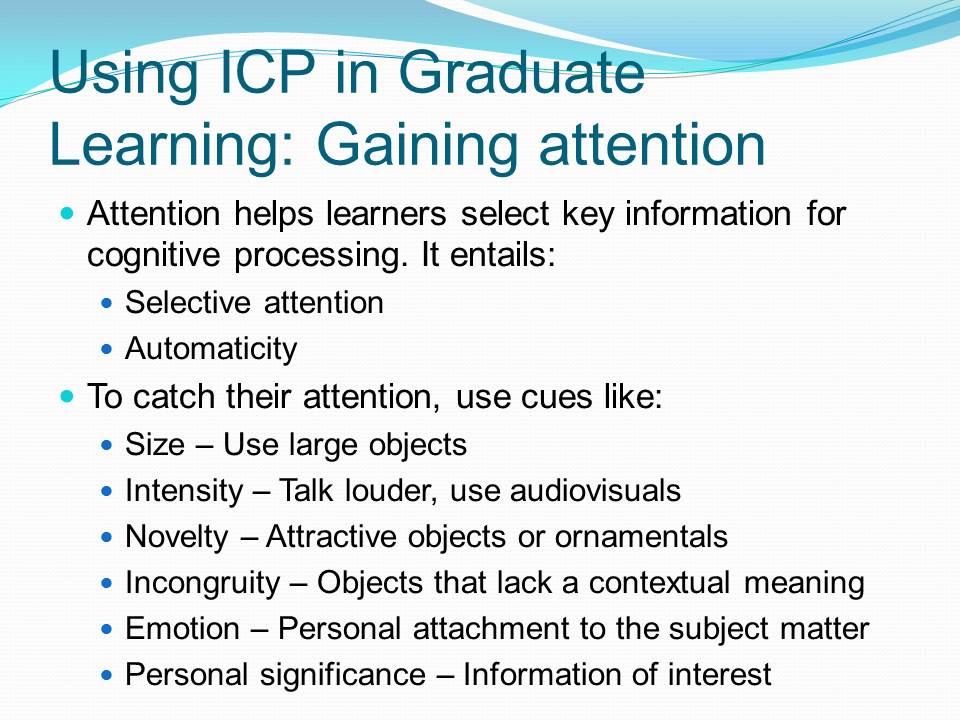
Prior Knowledge
- Learning builds on prior knowledge;
- Recap previous lesson’s key concepts;
- Allow learners to clarify the meaning of new concepts:
- Group discussions;
- Inductive reasoning.
- Compare and contrast between concepts to improve recall;
- Chunking of information to foster LTM;
- Rehearsal of information:
- Maintenance rehearsal;
- Elaborate rehearsal.
Students learn best when new information relates to what they already know (Driscoll 387). Instructors can begin a lesson by recapping concepts covered in undergraduate studies before introducing new information. Additionally, learners can discuss earlier concepts in groups. Inductive and deductive reasoning strategies can also help learners synthesize new information. Instructors can also teach graduate learners how to chunk new information to facilitate storage and retrieval. According to Driscoll, chunking information facilitates recall and retrieval of data from the LTM (390). Thus, teaching learners chunking strategies can help them organize information into manageable categories for easier memorization.
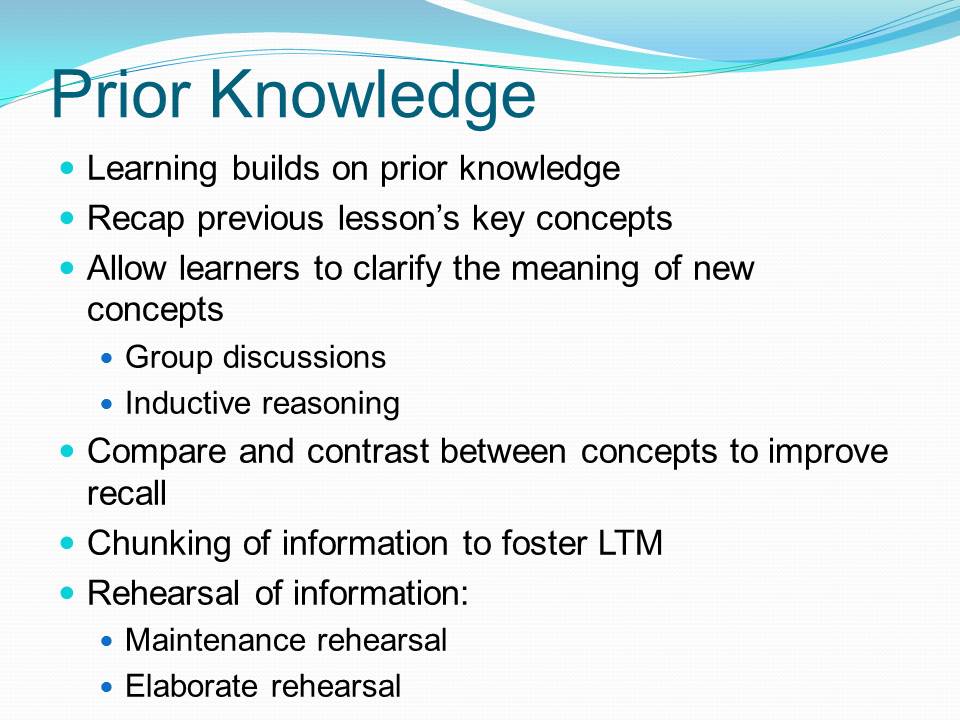
Encoding Information
Encoding entails converting input into an easily understandable and interpretable form (Driscoll 391).
Encoding methods for graduate learning include:
- Mental imagery – acronyms;
- Mnemonics; key word technique;
- Summarization techniques;
- Practice test questions;
- Self-questioning;
- Multiple representations.
Once information is encoded, retrieval from STM is easy.
Encoding facilitates information storage in the memory. When encoding, a learner organizes and connects new information to prior knowledge to make it meaningful (Driscoll 387). Therefore, encoding methods, such as mental imagery, facilitate information processing in the STM before it can be integrated into existing knowledge in the LTM. Other strategies relevant to higher learning include summarization, self-reflection, and mnemonics, among others. Encoding reduces the amount of information lost when data is converted from the STM to the LTM. It also facilitates LTM retrieval. Well-organized and integrated information (encoded) is easier to retrieve from the LTM than poorly understood data.
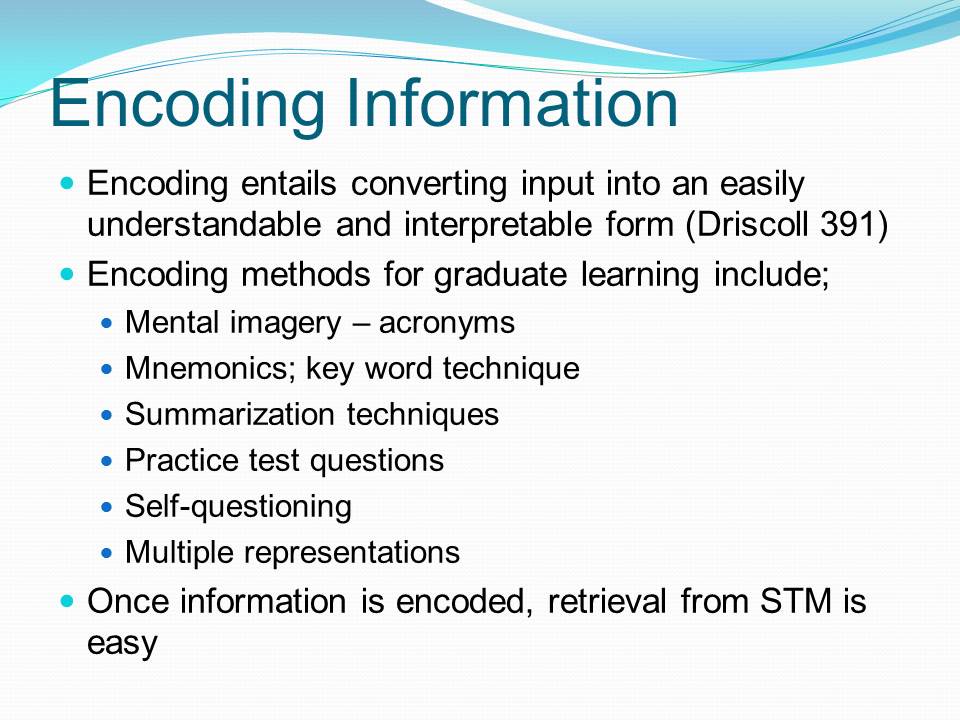
Repetitive/Rehearsal Learning
Through rehearsal, information stored in the STM is moved into the LTM.
Rehearsal can be:
- Maintenance rehearsal – repetition of concepts;
- Elaborate rehearsal – Using imagery and mnemonics.
In practice, rehearsal can be used:
- To illustrate a point repeatedly in different ways (STM);
- Reiterate important concepts learnt previously (LTM).
Other rehearsal strategies include:
- Rehearsing in real contexts/class presentations;
- Note-taking;
- Use of task checklists.
Rehearsal methods, particularly the use of mnemonics (acronyms) and visual imagery, can help learners relate unfamiliar concepts to prior knowledge in the LTM. In maintenance rehearsals, the learner practices key learning tasks repeatedly to enhance his or her mastery of the subject matter. The repetition enhances information storage and retrieval (Driscoll 391). On the other hand, elaborate rehearsals entail verbal cues, such as visual imagery, that help in STM storage and retrieval. Class presentations, note taking, and task checklists are some of the rehearsal techniques graduate learners can use to increase their mastery of the subject.
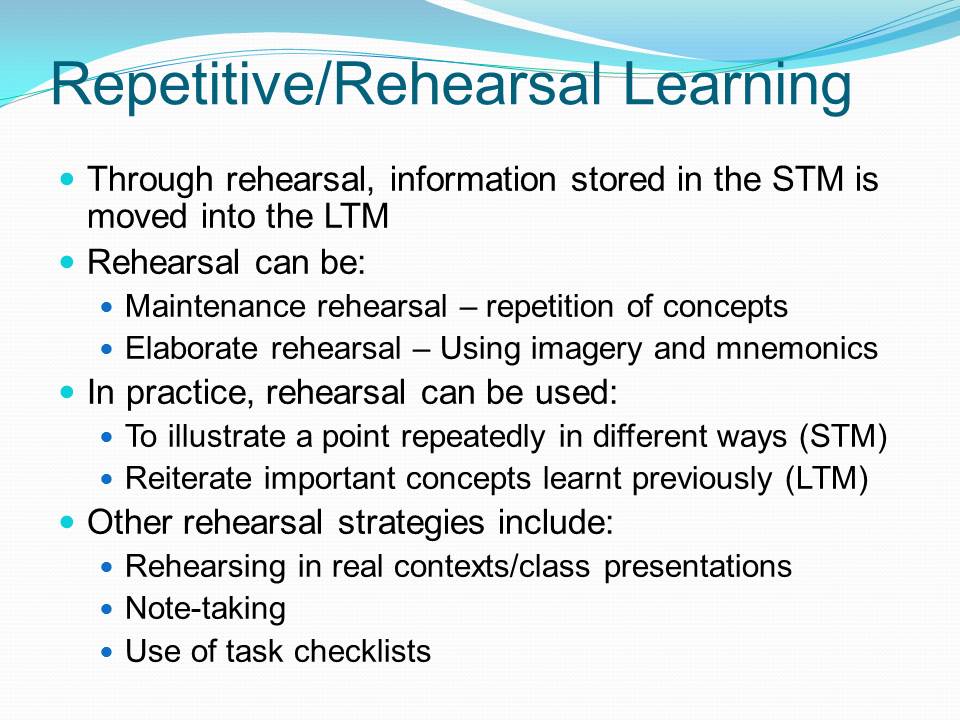
Support Meta-cognition
Meta-cognition is the “ability to reflect on a cognitive task and employ an appropriate learning strategy” (Driscoll 386). Supporting it helps control LTM storage and retrieval.
It builds self-reflection, independent learning, and self-regulation.
Meta-cognitive learners:
- Are motivated self-driven students;
- Use inductive & deductive reasoning;
- Know when and how to use information;
- Use meta-cognitive methods that support memorization.
Meta-cognition develops a student’s learning style, which helps him or her to become an independent learner. A student can choose learning strategies that facilitate knowledge acquisition at a personal level. Thus, supporting meta-cognition can help students to learn how to “control their cognitive processes” to achieve better outcomes (Driscoll 395). One way students can develop meta-cognitive skills is through self-reflective tasks. Inductive and deductive reasoning can also enhance their ability to evaluate problems independently. Meta-cognition promotes the learners’ problem-solving abilities and cognitive functioning. Through meta-cognition, learners can control information processing, learning, and recall.
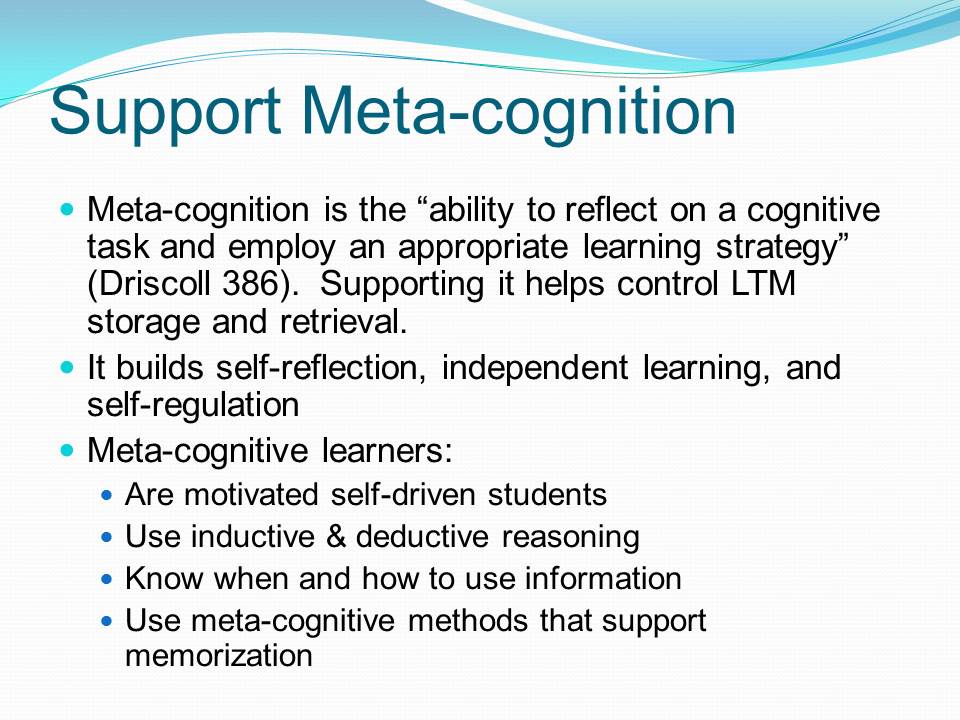
Chunking New Information
Chunking entails “the association of small bits of data with more meaningful chunks of information” (Driscoll 395).
Integrating new data with known information enhances recall and learning.
Graduate students can be taught chunking to promote information retention and recall:
- Repeat learned information or tasks;
- Split large chunks of information into simpler forms:
- Summarization.
Chunking helps in the processing and storage of information in the LTM.
Chunking helps learners reorganize information in a way that facilitates memorization. Chunking occurs in the STM, whereby a learner organizes information into categories to help him or her remember. The process also helps in the storage of in information in the LTM. Information organized into chunks is easier to retain and remember. Graduate learners should be taught chunking as a strategy for learning and memorizing more information during lessons. The effective use of chunking depends on how one integrates new information with the existing knowledge in the LTM.
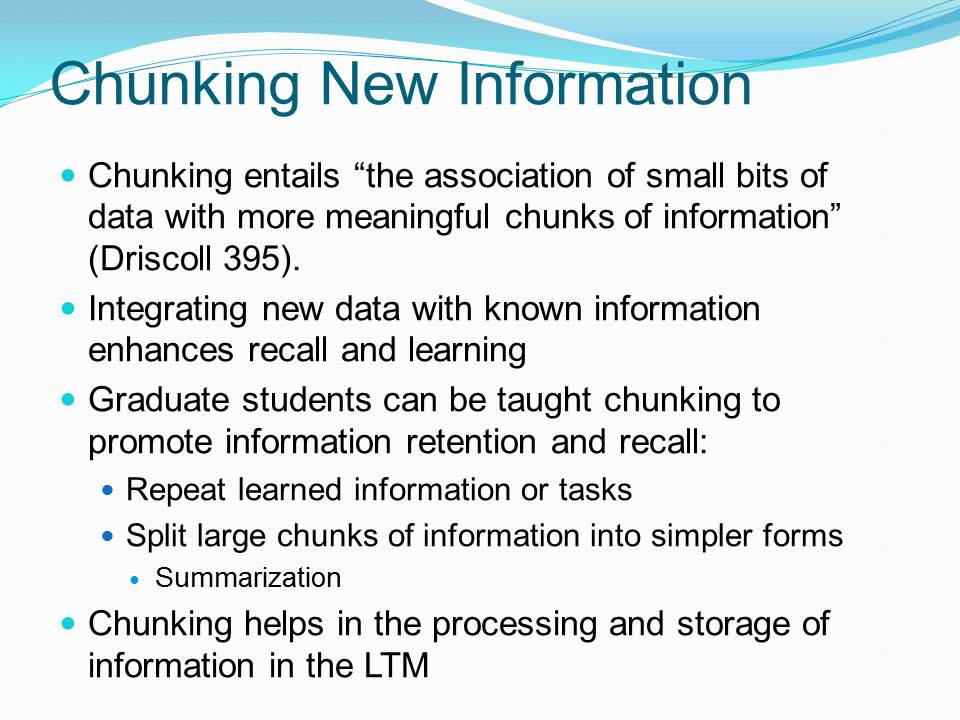
Retrieval of Information
Retrieval entails the recall of information or experiences learnt earlier. It can be:
- Involuntary – triggered by a stimulus;
- Deliberate – employs recall strategies/recognition cues.
Retrieval can be enhanced through:
- Providing pre-generated stimuli – illustrations or objects that jog one’s memory;
- Minimizing interference – graduate classes should occur in conducive learning environments;
- Providing information in an organized way to enhance retrieval.
Retrieval is the recall of information from the LTM. It entails remembering previous experiences or knowledge. For effective retrieval to occur, information encoding and storage in the LTM must first take place. Learners can employ two strategies to retrieve information from the LTM, namely, deliberate and involuntary retrieval. Deliberate retrieval involves the use of recall strategies, such as recognition cues, to stimulate the memory. In contrast, involuntary retrieval is spontaneous. To maximize retrieval, graduate learners must learn in an environment that is conducive for learning to foster encoding and storage. Additionally, they must receive organized information during instruction.
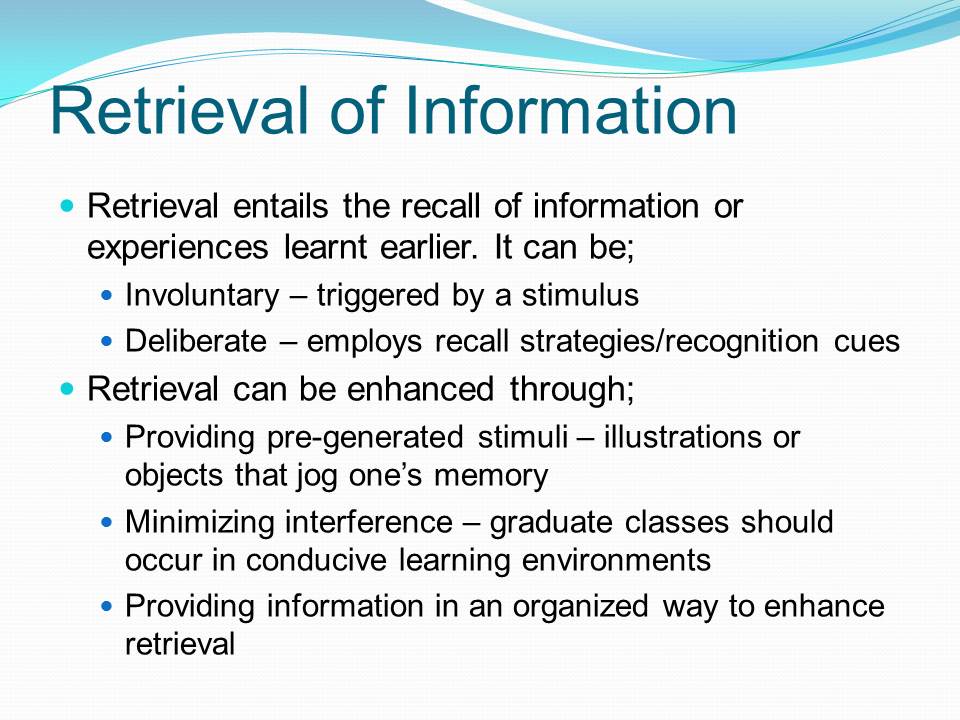
Organized Information
Organized information:
- Is useful in encoding, storage & retrieval from the LTM;
- Helps gain the learner’s attention;
- Helps develop a deeper understanding of concepts & relationships.
Strategies include:
- Multiple representation of information;
- Use of graphics to illustrate and analyze concepts;
- Use of pattern recognition to gain attention;
- Providing a variety of practice opportunities and experiences;
- Chunking.
Organized information can help learners in encoding and storage of data in the LTM. It also appeals to the sensory memory, which facilitates further processing of data. Thus, strategies like pattern recognition can capture the attention of the students. Additionally, graphic representations, which are used to illustrate concepts, facilitate recall in learners. Breaking down information into smaller interpretable chunks can also aid in encoding and in new memory formation. Providing a range of practice opportunities can help in the transfer of information from the STM to the LTM.

Conclusion
The CIP theory can be applied to graduate learning in areas like:
- LTM and STM storage – capacity & duration
- Retrieval – depends on encoding and storage efficacy
- Sensory register/attention – selective attention and automaticity
- Meta-cognition – a learner manages his/her own learning
- Chunking – recall, imagery, mnemonics
- Organized information – easier encoding, storage & retrieval.
In conclusion, the CIP theory explains the process by which learners acquire, synthesize, store, and retrieve information from their memories. The sensory memory perceives stimuli and selects important information that is processed in the STM. After the processing stage, the information is stored in the LTM, which allows retrieval upon stimulation. This theory can be used to help graduates learn by optimizing encoding, processing, meta-cognition, storage, and retrieval of data.
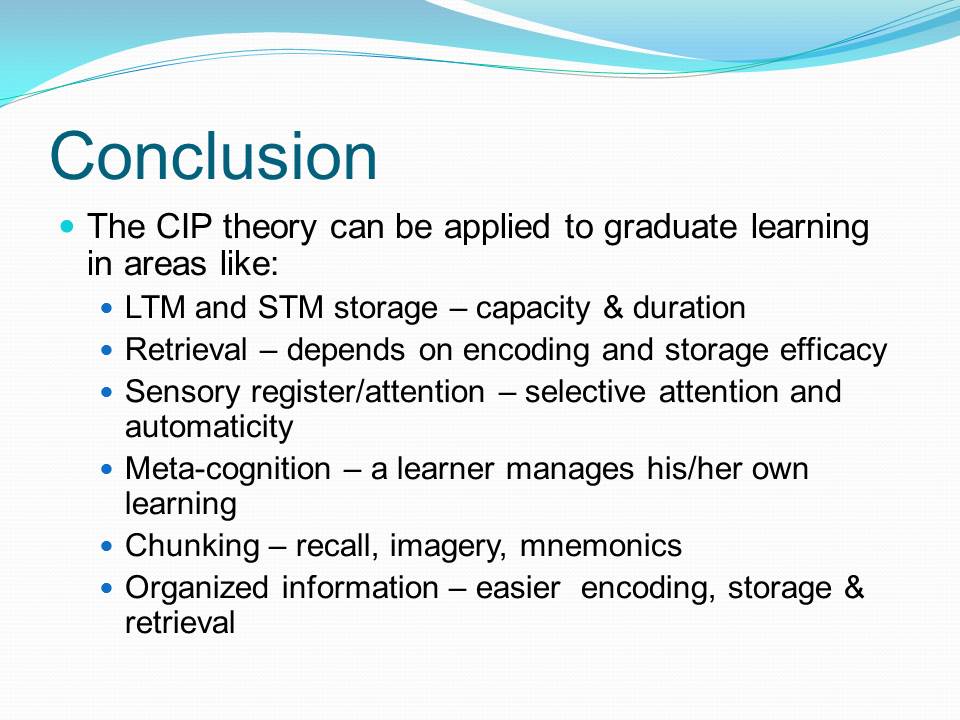
Works Cited
Coker, Donald and Jane White. “Selecting and applying learning theory to classroom teaching strategies”. Education 114.1, (1993), 77-80. Print.
Driscoll, Marcy. Psychology of Learning for Instruction: Cognitive Information Processing. Toronto, ON: Pearson, 2005. Print.